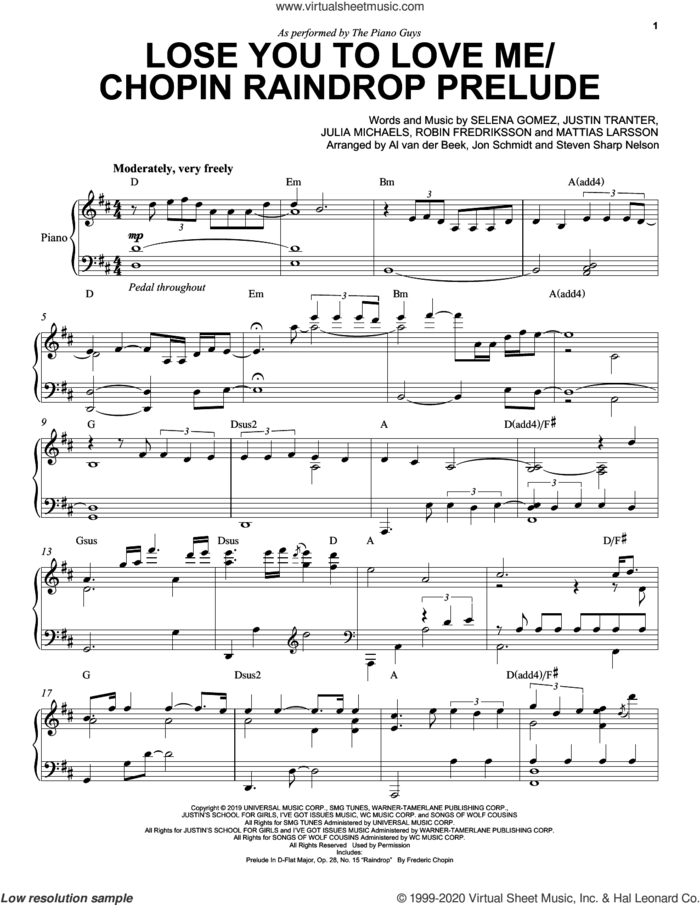

Plants slowly lift their leaves back up after being pelted to the ground. Then, as the clouds drift away, the earth is renewed. The midst of the storm is intense, but it levels off and is back to the lightness of the beginning of the rain. It starts gently, lets you know it’s raining, gets a heavier, gets softer, and then the storm comes.

Although Chopin did not write the Raindrop Prelude as program music (he did not ascribe a specific image or idea to it), it does act very much like a rain storm. You don’t have to be a music theorist to pay attention to how each section blends into the next. In this way, the music slowly dies away, much like a storm drifting away slowly. The melody falls back down, and we hear just chords held out over the repeated A♭ in the middle voice. 82–89)Īs the A theme begins to repeat, it is stopped, and a high B♭ sounds and is suspended without accompaniment, almost like a gentle declaration that it’s all clear. It’s that calm moment when the air smells clean, and everything feels at piece, if only for a moment. The storm is back to being gentle the birds come out of hiding, and the sun is beginning to peek out from behind the clouds again. We come back to the first theme to close out the piece, and we are back in D♭, which is emphasized by the 2nd inversion descending D♭ major triad from the beginning. There is a feeling of instability, as Chopin begins the journey back to D♭ major, which occurs in the same way as before, this time with G♯ turning back into A♭. 43–55.Īfter this, Chopin changes the repeated notes, repeating B for three measures, then going back to G♯ at which point the inner voice that was between the octave G♯s becomes the outer voice. This one repeated note, then added octave with inner voice is repeated in mm. Additionally, a melody is added within this octave, which creates more depth and complexity. Measures 28–34 have only this repeated in the right hand, but measure 35 adds an octave above it, which makes it feel better. This is seen in the repeated notes of the right hand, which took over the repeated A♭ that is now a G♯. There’s a feeling of growth, but not a steady growth, that permeates this section. In the A section, the melody floated along in a higher register on top of the accompaniment, but the B section holds the melody in the bass and obscures a second, dependent melody in the inner voices of the right hand chords. This, along with a change in texture, contrasts the mood of the A section. The B section is in the parallel, enharmonic minor of the piece. It’s still technically tonal, but it’s interesting to have the fifth of the chord drawn out on its own to lead into the new tonic. In these measures, the A♭ keeps repeating on every eighth note, which turns into a G♯ that acts as a common tone to lead to C♯ minor. Chopin indeed leads to the parallel minor but in a less tonal way. 20–27 Repeat the first 8 measures but this time end on an A♭ dominant 7 (which tends to pull toward the tonic D♭ major OR its parallel minor, C♯).

While the melody is not found in the B section, the movement by steps instead of triads is what caused me to hear a sort of foreshadowing, as the movement is very different, but it still fits within the same scope that the first four measures set out. There seems to be foreshadowing in the melody of the stormy section (the B section of the piece), as this seems to be a mini storm within the peace of the repeated first four measures. Foreboding but still on top of the gentle repeated A♭ in the left hand. 5 –8 Repeat of the first 4 measures Chopin Prelude in D-flat Major, Op. Is it this melody, the steady eighth-note repetitions in the left hand, or both that contribute to the sense of rain and melancholy in this piece? This melody, the overall theme we think of when we think about the Raindrop Prelude, is interesting because it starts with such a dramatic fall, right at the beginning of the piece. It climbs its way back up to the F on which it started, surpasses it for a moment, and hangs around the F before falling back into a repeat of the first falling triad. Measures 1–4 The melody descends over a 2nd inversion D♭ major triad, which pretty much sets the scope for the melody. 1–27) Chopin Prelude in D-flat Major, Op. The piece is in an ABA structure, meaning the material at the beginning and the end is the same, and something different-in this case a change to the parallel minor (C♯ = D♭)-happens in the middle.


 0 kommentar(er)
0 kommentar(er)
